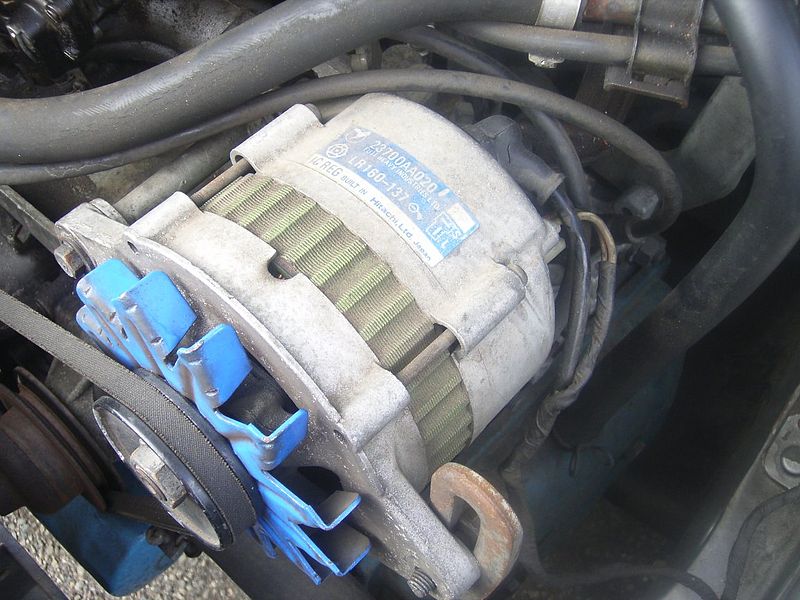How Alternators Work: A Comprehensive Guide.


An alternator plays a critical role in a vehicle’s electrical system. It generates electrical power and maintains the battery's charge, ensuring that essential components like headlights, dashboard indicators, and electronic devices function properly.
What is an Alternator?
An alternator is an electromechanical device that converts mechanical energy into alternating current (AC) electrical energy. Although vehicles require direct current (DC) to operate, the alternator initially produces AC, which is then converted to DC.
How It Works:
- The engine drives a belt connected to the alternator pulley.
- As the pulley spins, it rotates the alternator's internal components, creating electrical energy.
- This energy charges the battery and powers the vehicle's electrical systems.
Key Components of an Alternator
- Rotor:
- The rotor is a central rotating component driven by the engine belt.
- It contains an electromagnet created by winding conductive wire around an iron core.
- As voltage is applied, the rotor generates a magnetic field, with alternating north and south poles.
- Stator:
- Surrounding the rotor, the stator is a stationary component made up of three coil windings.
- As the rotor spins inside the stator, it induces AC voltage in the windings due to the changing magnetic field.
- Slip Rings and Brushes:
- Slip rings are mounted on the rotor shaft, allowing current to pass into the rotor’s windings.
- Brushes, made of carbon, maintain contact with the slip rings to deliver voltage.
- Rectifier:
- The rectifier converts the AC voltage produced by the stator into DC voltage.
- It consists of multiple diodes, which only allow current to flow in one direction, ensuring that the output is a smooth DC voltage.
- Voltage Regulator:
- The voltage regulator ensures the alternator maintains a consistent output voltage.
- It adjusts the rotor’s magnetic field strength based on the battery’s charge level and the vehicle's electrical demands.
How the Alternator Generates Power
- Initial Excitation:
- When the vehicle starts, the battery supplies initial voltage to the rotor via the brushes and slip rings, creating a magnetic field.
- Magnetic Induction:
- As the engine runs, the belt drives the rotor, spinning it within the stator.
- The changing magnetic field induces AC voltage in the stator windings.
- AC to DC Conversion:
- The induced AC voltage passes through the rectifier, where diodes convert it to DC.
- The DC voltage is then used to charge the battery and power the vehicle’s electrical components.
- Voltage Regulation:
- The voltage regulator monitors the battery's voltage and adjusts the rotor's excitation to maintain a stable output.
Alternator vs. Generator
While both devices convert mechanical energy into electrical energy, the key difference lies in the type of current they produce:
- Alternator: Produces AC, which is later converted to DC.
- Generator: Can produce either AC or DC directly.
How All Components Work Together
- The ignition switch activates the alternator by supplying initial current to the rotor.
- As the engine revs up, the rotor spins, inducing voltage in the stator windings.
- The rectifier converts the AC voltage to DC, charging the battery.
- The voltage regulator ensures the output remains consistent, preventing overcharging or undercharging.
Common Issues with Alternators
- Worn-out Brushes:
- Brushes can wear out over time, leading to poor contact with the slip rings.
- Faulty Diodes:
- A damaged rectifier can result in insufficient or no power output.
- Belt Slippage:
- A loose or damaged belt can prevent the alternator from generating adequate power.
- Overheating:
- Excessive heat can damage internal components, especially the voltage regulator and diodes.
Signs of a Failing Alternator
- Dimming Lights: Headlights and dashboard lights may dim due to insufficient power.
- Warning Light: The battery or alternator warning light may illuminate on the dashboard.
- Electrical Failures: Devices such as power windows, radios, or air conditioning may malfunction.
- Dead Battery: A failing alternator can lead to a drained battery, preventing the vehicle from starting.
Maintenance Tips
- Check the Belt: Regularly inspect the drive belt for wear and proper tension.
- Test the Voltage: Use a multimeter to check the alternator’s output voltage. It should typically range between 13.8V and 14.4V when the engine is running.
- Inspect Connections: Ensure all electrical connections are clean and secure.
Conclusion
An alternator is a vital component of a vehicle’s electrical system, ensuring the battery remains charged and all electronic devices function correctly. By understanding how it works and maintaining it properly, you can prevent common issues and extend the life of your vehicle.
If you have any further questions about alternators or vehicle electrical systems, feel free to leave a comment below. Don’t forget to share this guide with anyone who might find it helpful!
Tips for Maintaining Your Car’s Battery Life.
Common Mistakes to Avoid When Buying a Used Car
https://auscarsales.au/how-alternators-work-a-comprehensive-guide/

Comments
Post a Comment